iPhone 6 and iPhone 6 Plus: Preliminary Results
by Joshua Ho on September 22, 2014 7:07 AM EST- Posted in
- Smartphones
- Apple
- Mobile
- iOS
- iPhone 6
- iPhone 6 Plus
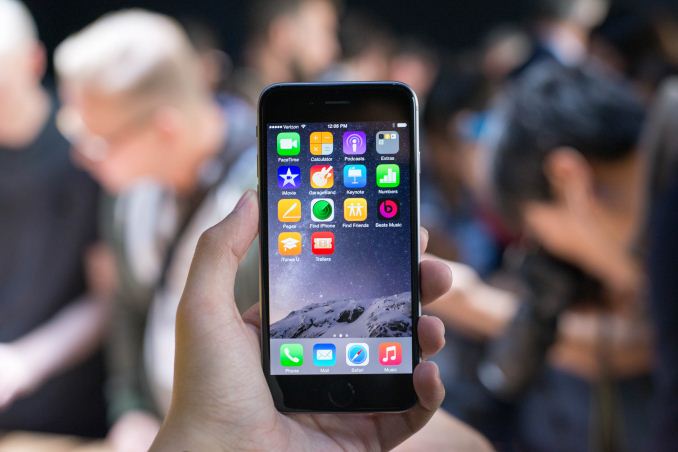
While we’re still working on the full review, I want to get out some preliminary results for the iPhone 6. For now, this means some basic performance data and battery life, which include browser benchmarks, game-type benchmarks, and our standard web browsing battery life test. There’s definitely a lot more to talk about for this phone, but this should give an idea of what to expect in the full review. To start, we'll look at the browser benchmarks, which can serve as a relatively useful proxy for CPU performance.
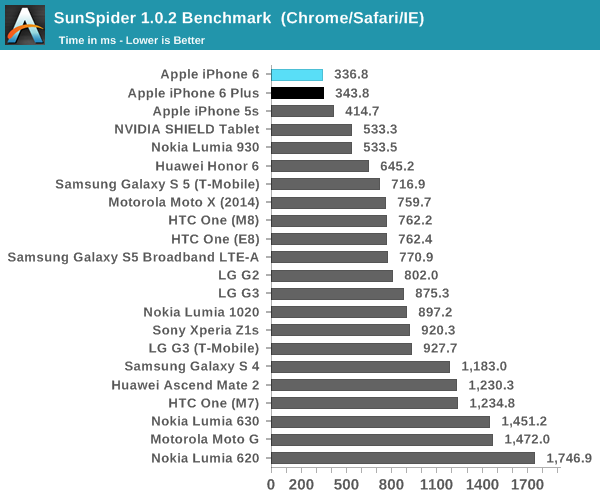
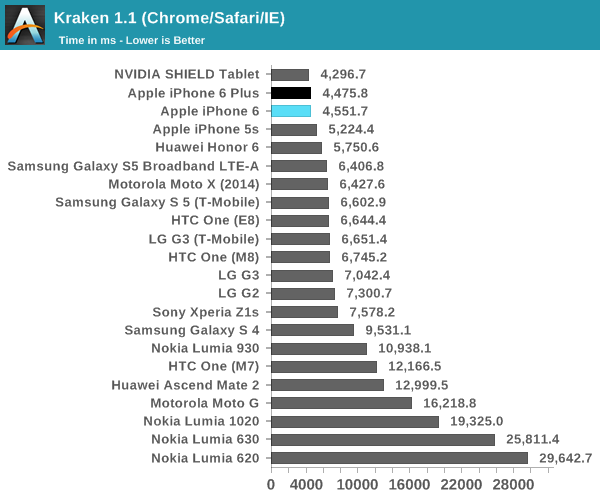
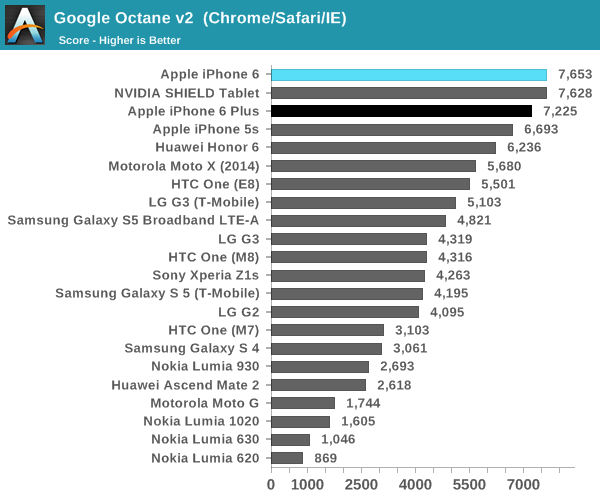
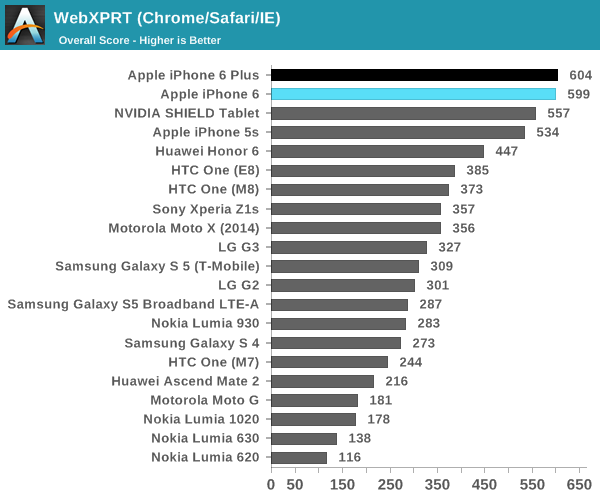
There are a few interesting observations here, as a great deal of the scaling is above what one would expect from the minor frequency bump when comparing A7 and A8. In SunSpider, we see about a 13% increase in performance that can't be explained by frequency increases alone. For Kraken, this change is around 7.5%, and we see a similar trend across the board for the rest of these tests. This points towards a relatively similar underlying architecture, although it's still too early to tell how much changes between the A7 and A8 CPU architectures. Next, we'll look at GPU performance in 3DMark and GFXBench, although we're still working on figuring out the exact GPU in A8.
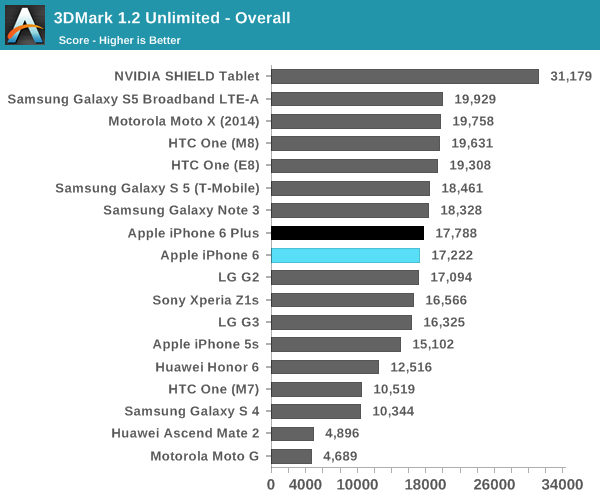
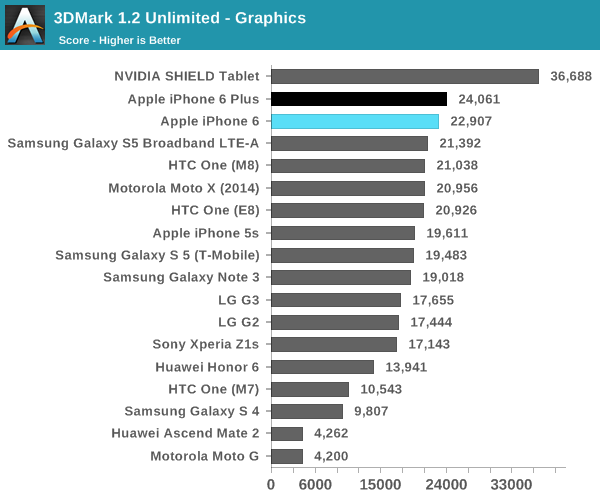
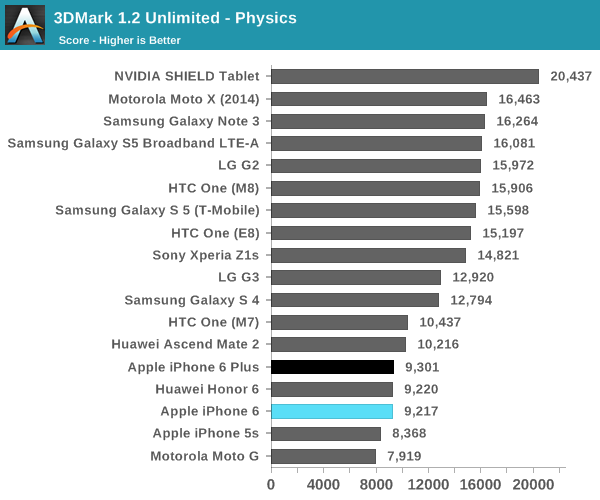
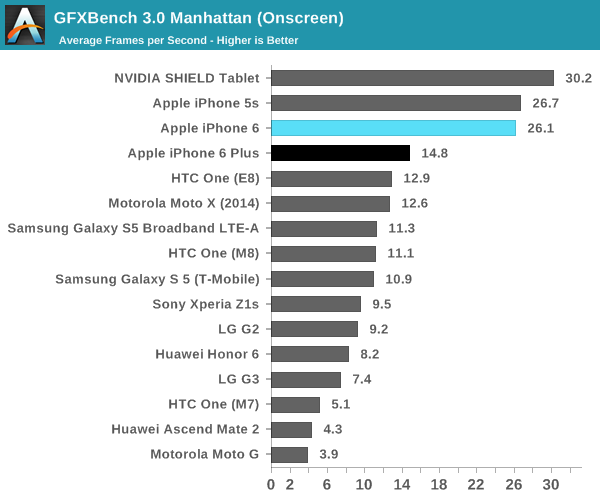
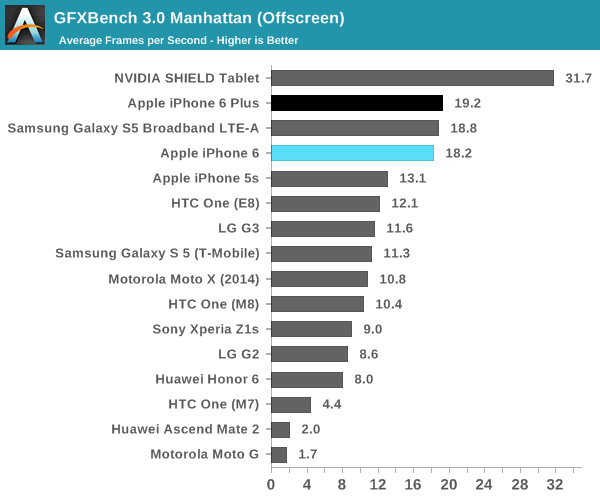
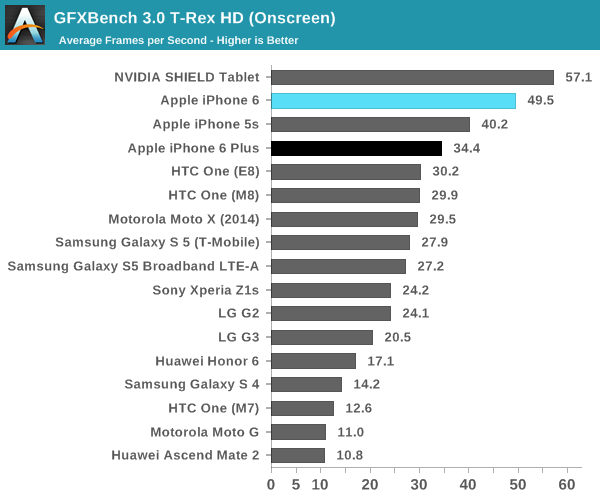
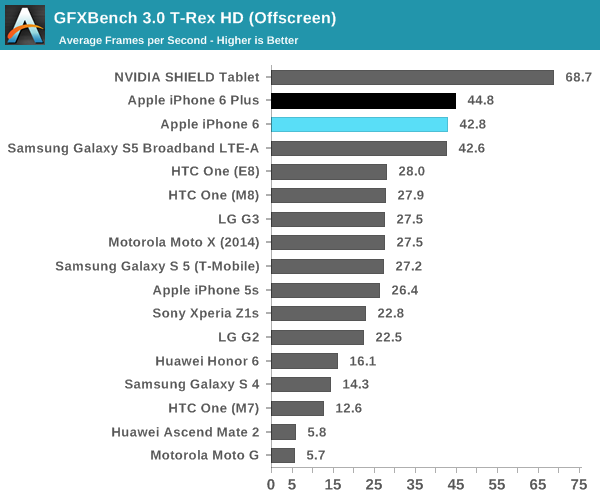
In in GPU benchmarks, we generally see a pretty solid lead over the competition for the iPhone 6/A8. It's seems quite clear that there is a significant impact to GPU performance in the iPhone 6 Plus due to the 2208x1242 resolution that all content is rendered at. It seems that this is necessary though, as the rendering system for iOS cannot easily adapt to arbitrary resolutions and display sizes. Before we wrap up this article though, I definitely need to address battery life. As with all of our battery life tests, we standardize on 200 nits and ensure that our workload in the web browsing test has a reasonable amount of time in all power states of an SoC.

As one can see, it seems that Apple has managed to do something quite incredible with battery life. Normally an 1810 mAh battery with 3.82V nominal voltage would be quite a poor performer, but the iPhone 6 is a step above just about every other Android smartphone on the market. The iPhone 6 Plus also has a strong showing, although not quite delivering outrageous levels of battery life the way the Ascend Mate 2 does. That's it for now, but the full review should be coming in the near future.










316 Comments
View All Comments
Valis - Monday, September 22, 2014 - link
Excuse me for saying, but this looks rigged.RattyUK - Monday, September 22, 2014 - link
Yeah, I wonder if the Physics test has been written for the A8 processor, or it's just running in emulation.GC2:CS - Monday, September 22, 2014 - link
The physics test between A6 and A7 showed basically no improvement at all.Adding this to the mix means that the iPhone 6 is just 10% faster than a good old iPhone 5 according to physics test.
eanazag - Monday, September 22, 2014 - link
The physics should at least show a bump up because of the clock speed bump if it is hitting the CPU. If it is running off of the GPU, I would expect a bump also.If there really is no bump in performance, I'd like to see the battery life comparable to the other systems.
kron123456789 - Monday, September 22, 2014 - link
Nvidia Shield Tablet is still more powerful. But it's still a tablet. I wonder how it would compete with the new iPads that coming within a month.Giraffy - Tuesday, September 23, 2014 - link
Uh, Tablet will destroy it. The new iPads aren't going to have some magical unicorn GPU in it. The Shield Tablet has the K1, which will not long after be followed up by Maxwell. There's simply no catching NVIDIA at this point when it comes to their mobile GPU performance. It's not a contest.lucam - Tuesday, September 23, 2014 - link
Fair enough, I wonder if you can use the Shield for 12-15 hours without stopping. And moreover if you can ever plug a K1 inside a phone.kron123456789 - Tuesday, September 23, 2014 - link
Well, in wi-fi browsing it can last about 11 hours. In games...not so much.craighamilton - Saturday, December 6, 2014 - link
This only shows that A6 and A7 are not far better than the other phone in the market. Give me reason then to buy one. /Craig from http://www.topreport.org/phones/blackcrayon - Tuesday, September 23, 2014 - link
The new iPads might not have a magical unicorn, but they *could* have an A8X with 10-12 of these PowerVR cores... I like how there's "no catching NVIDIA" even though they were pretty poor for a pretty long time in their smartphone/tablet GPUs.